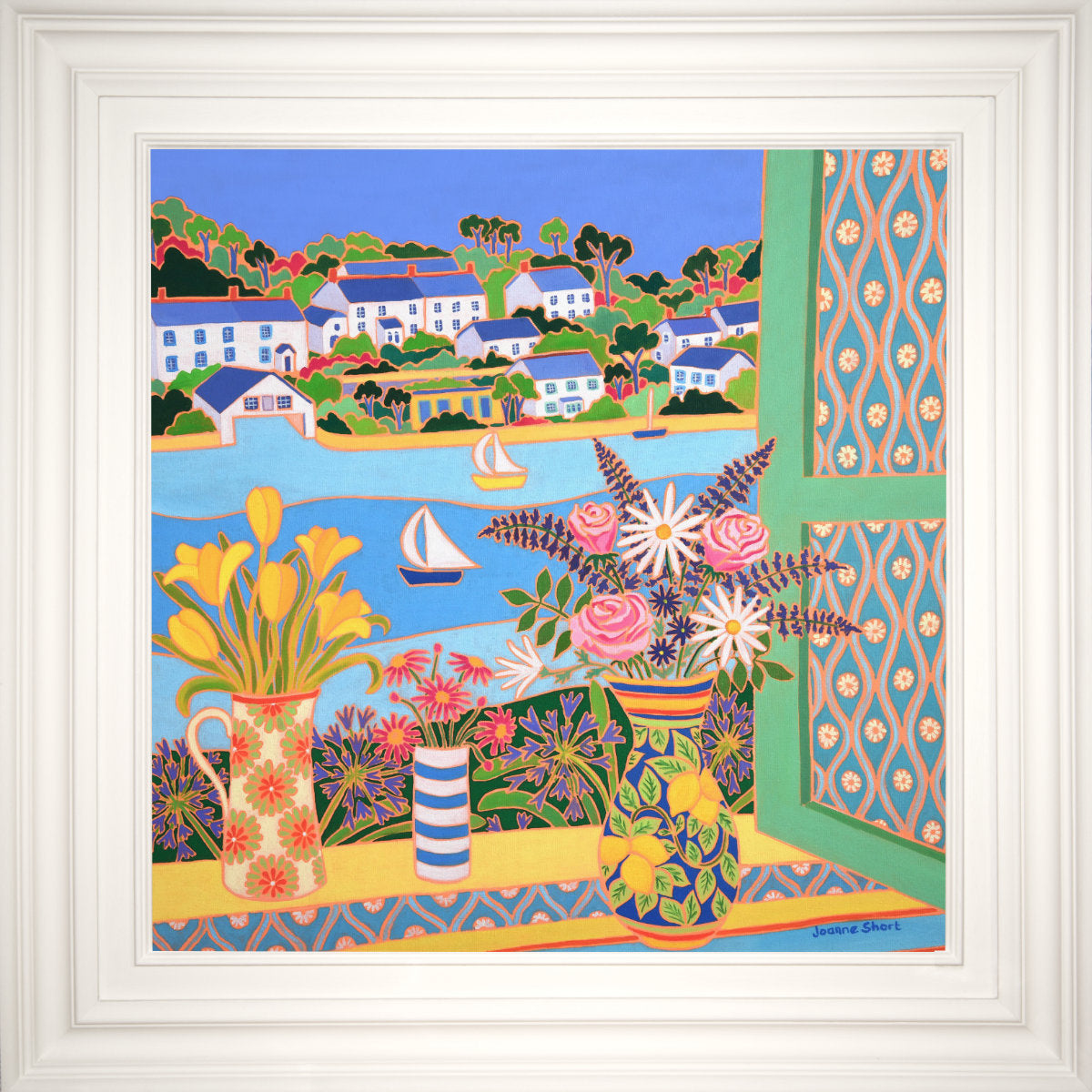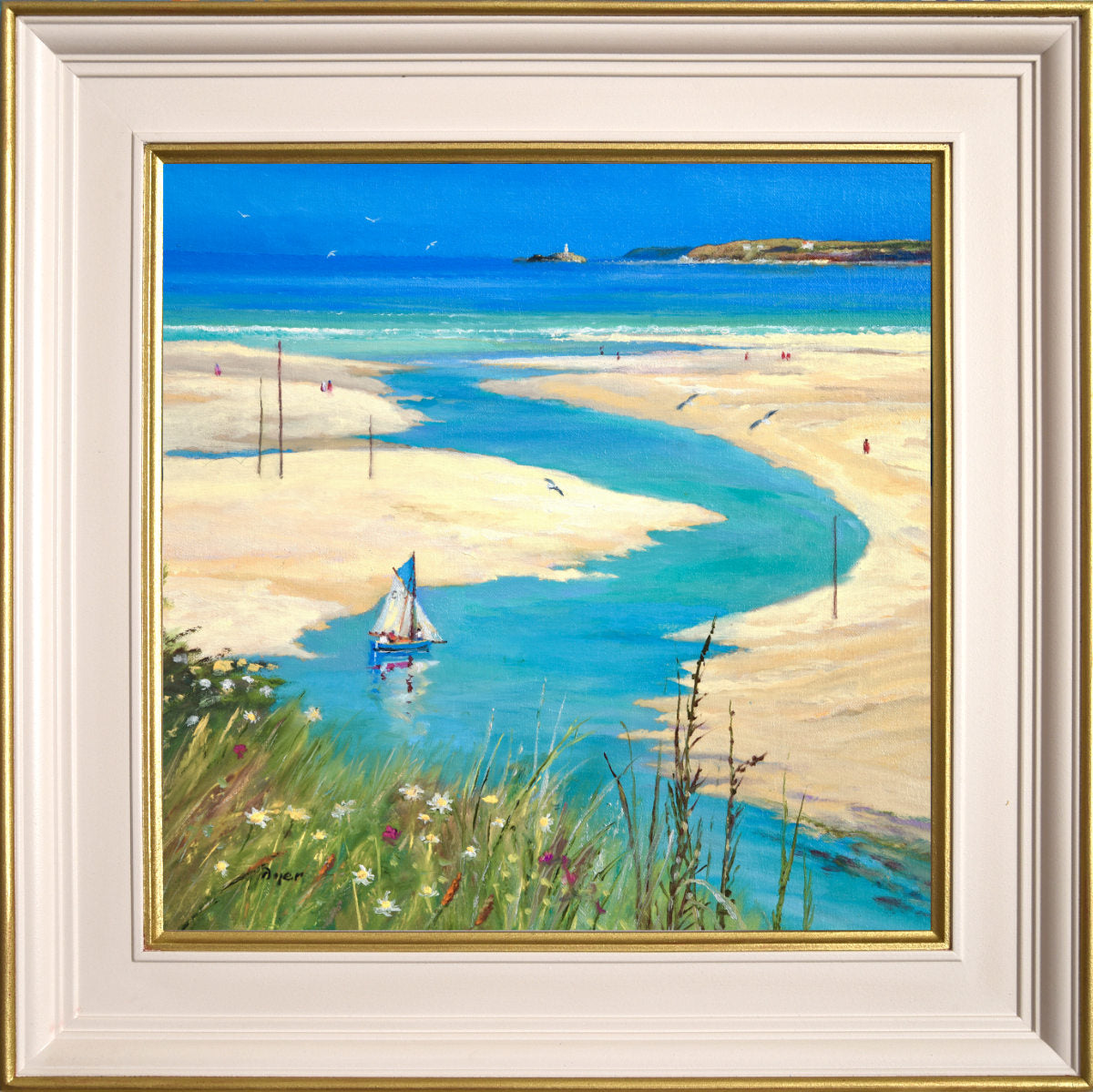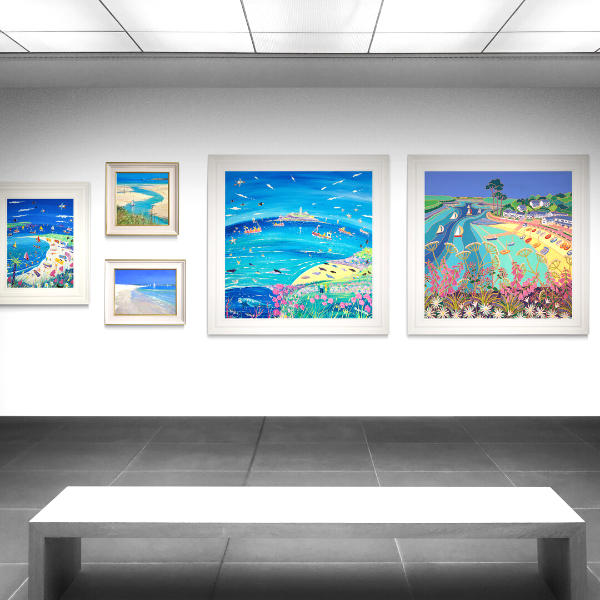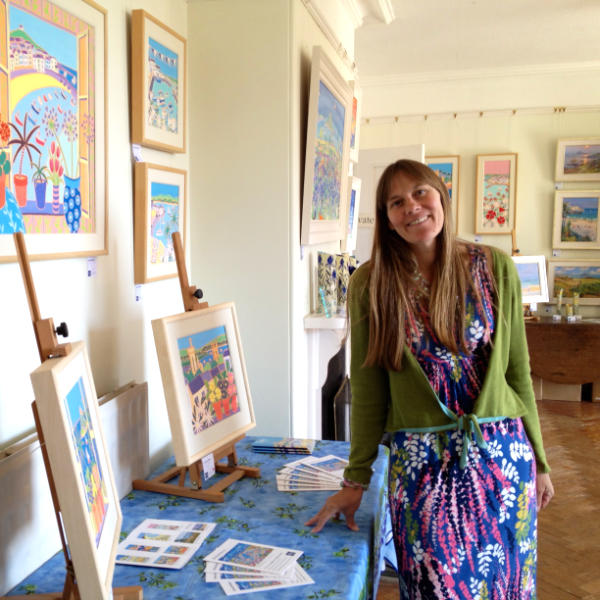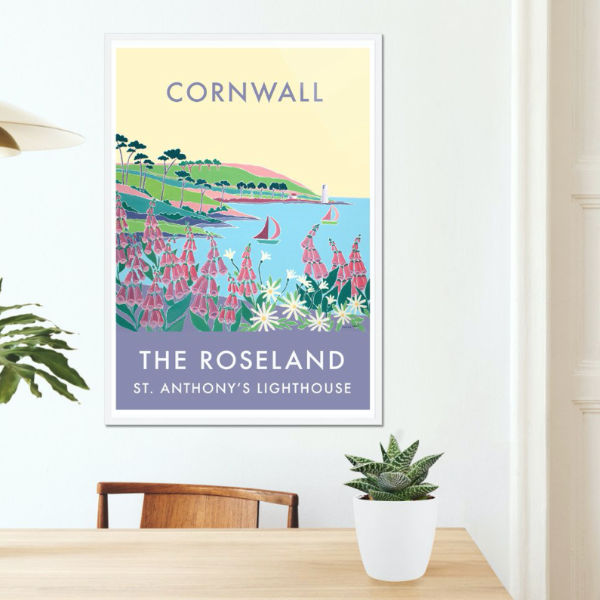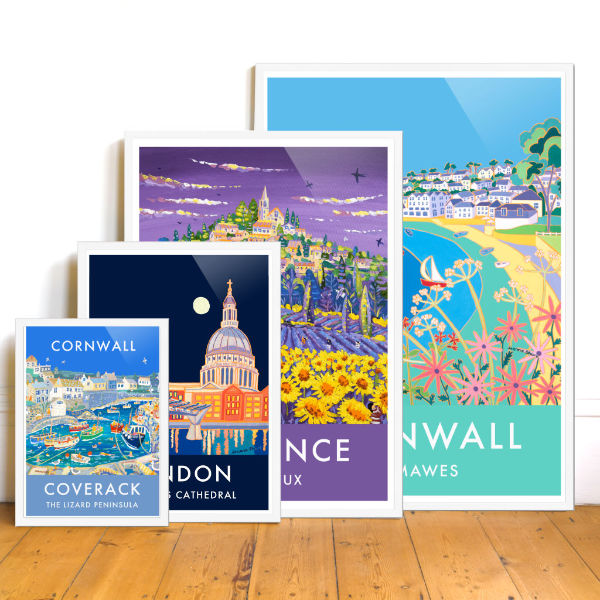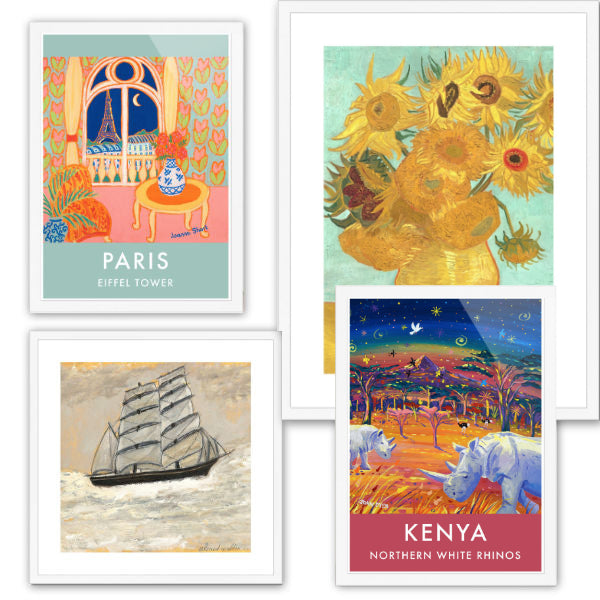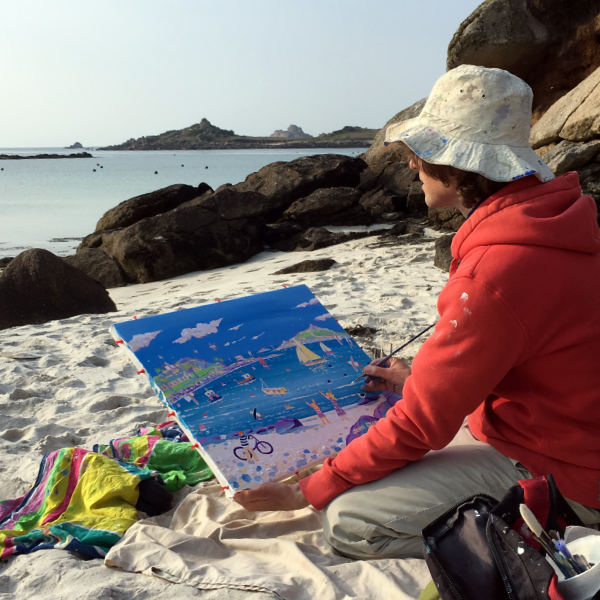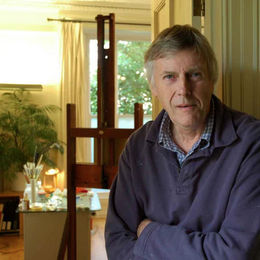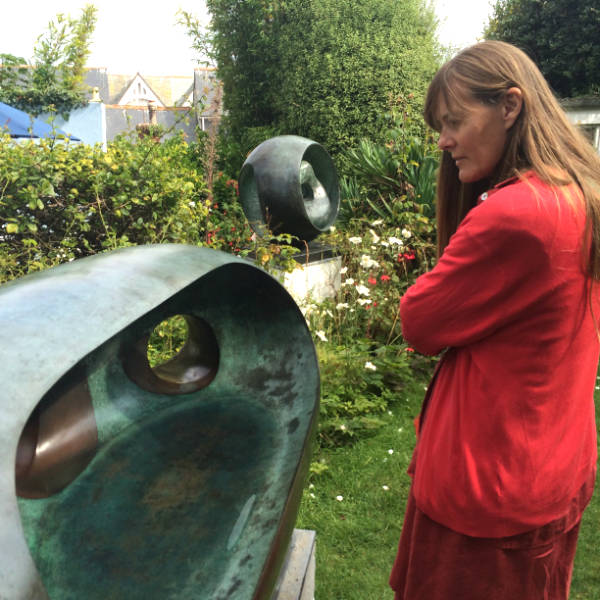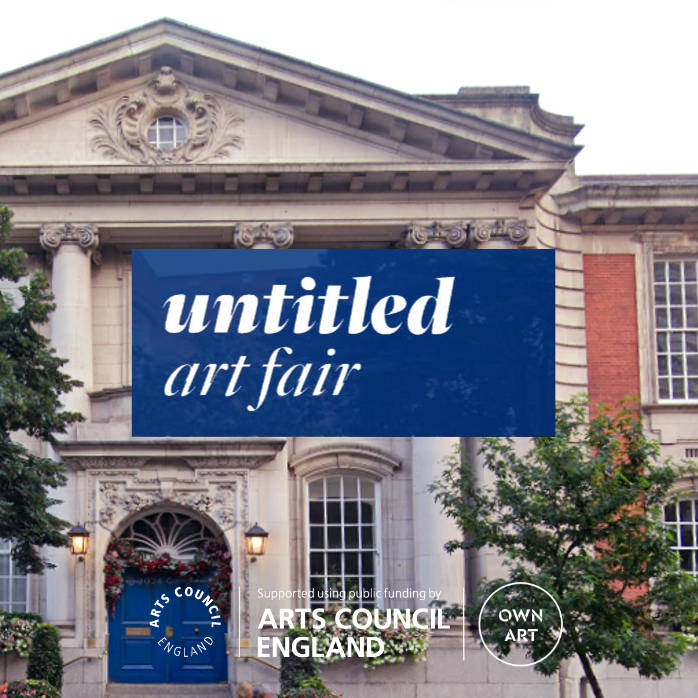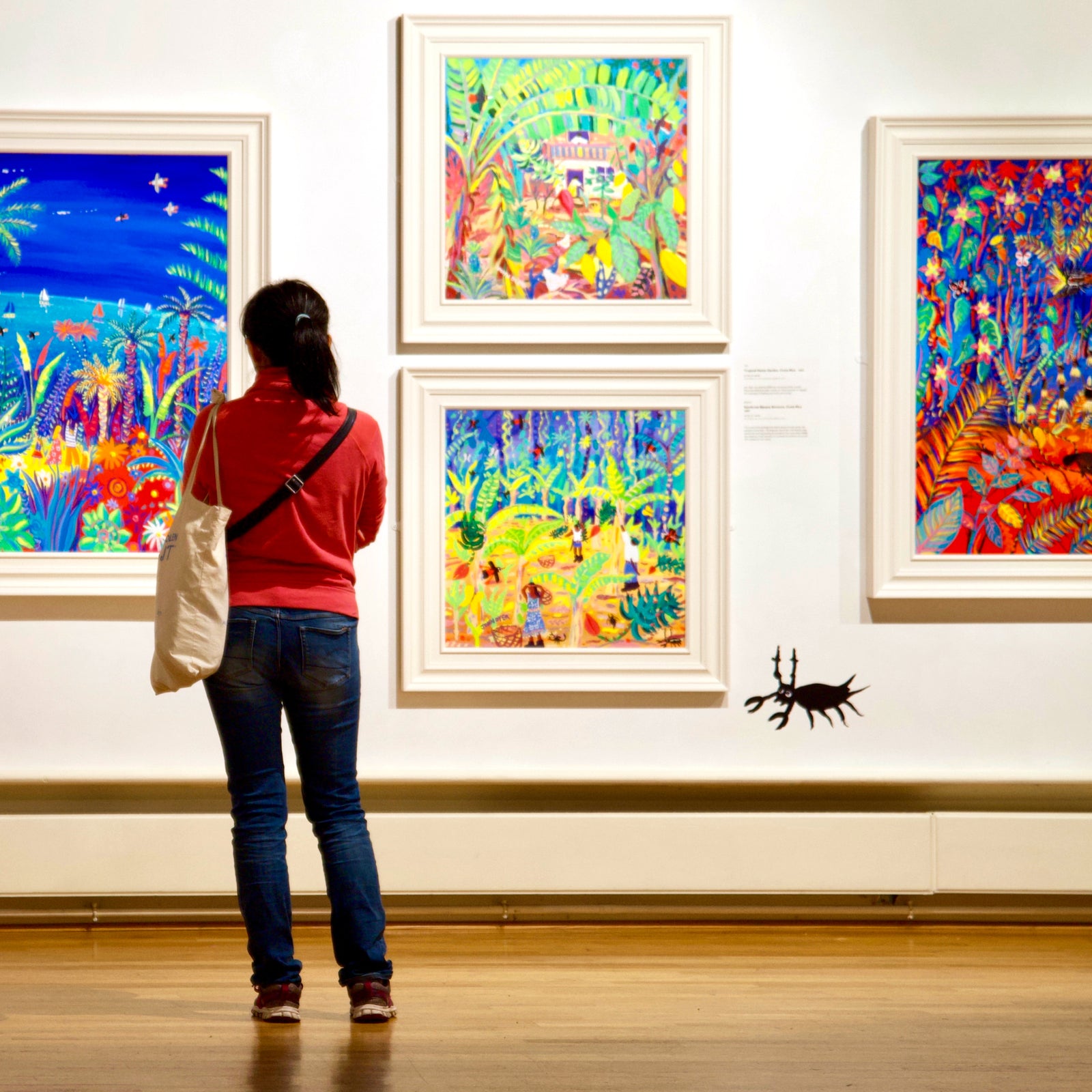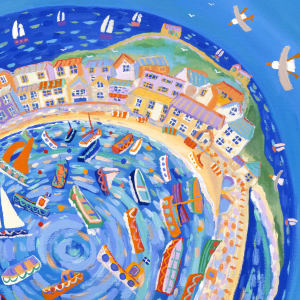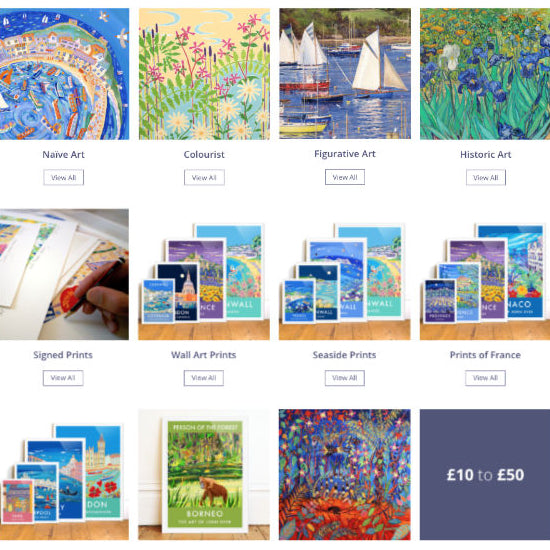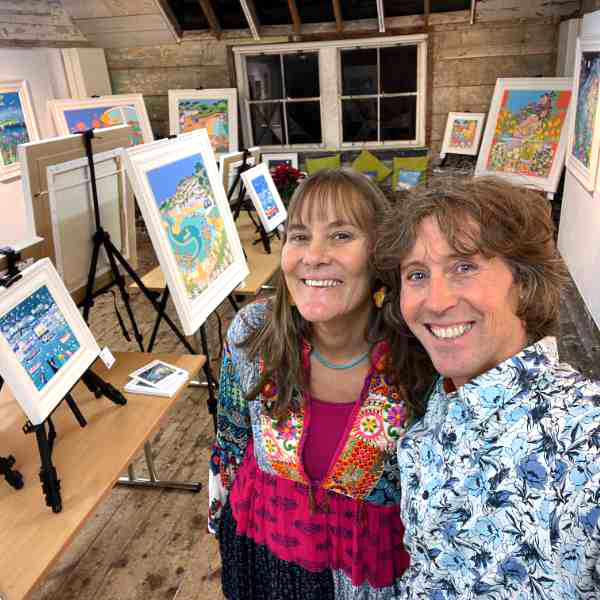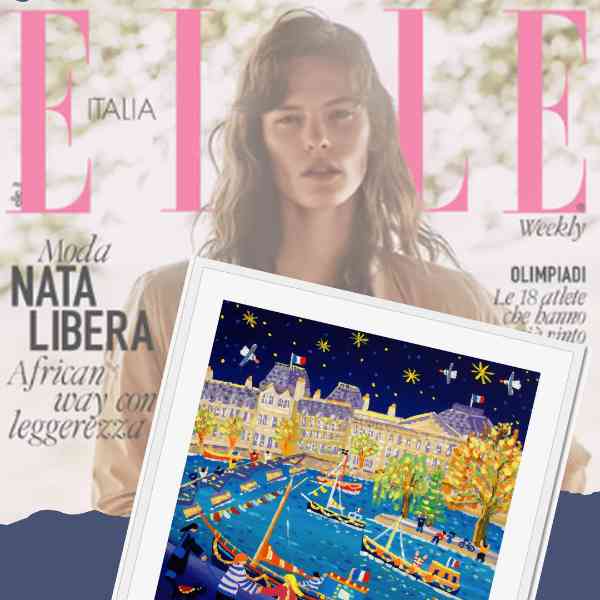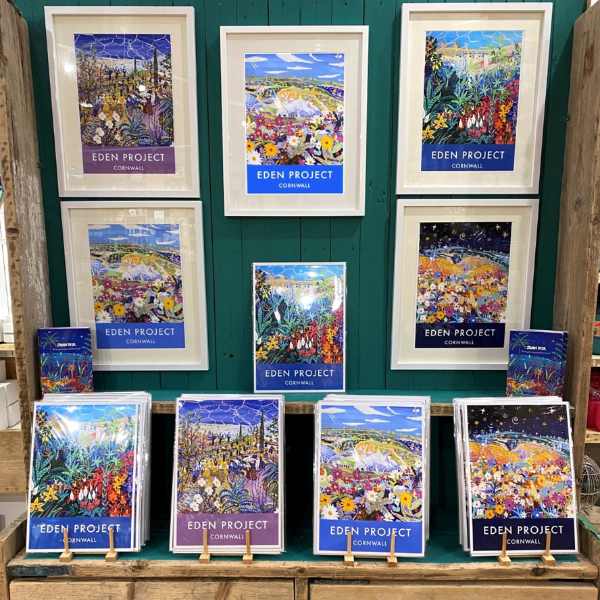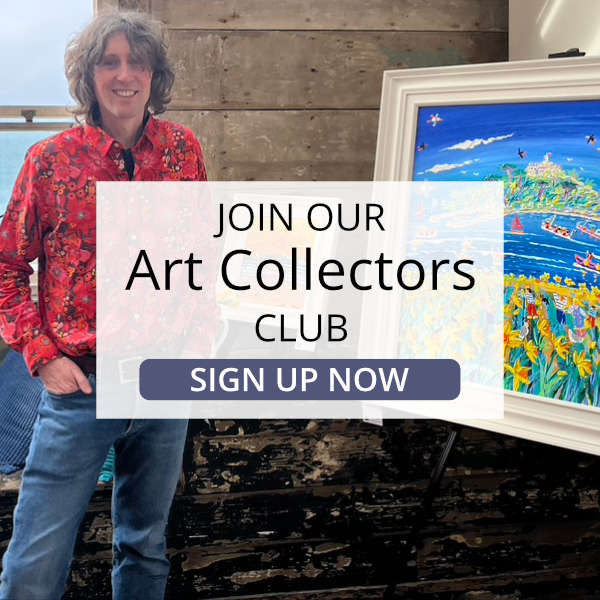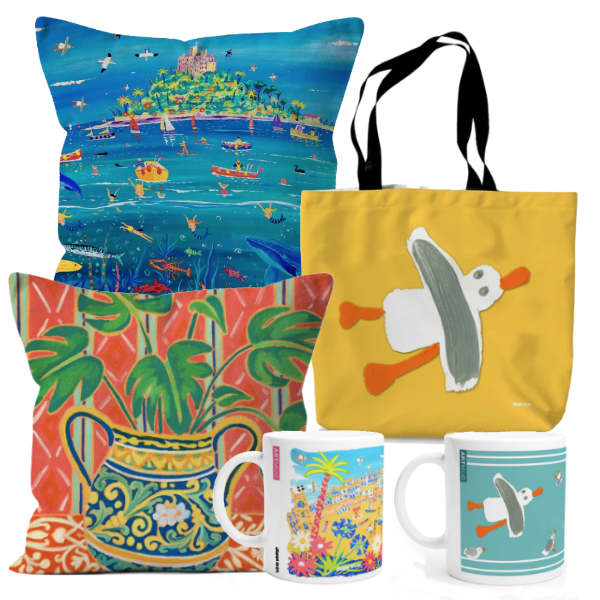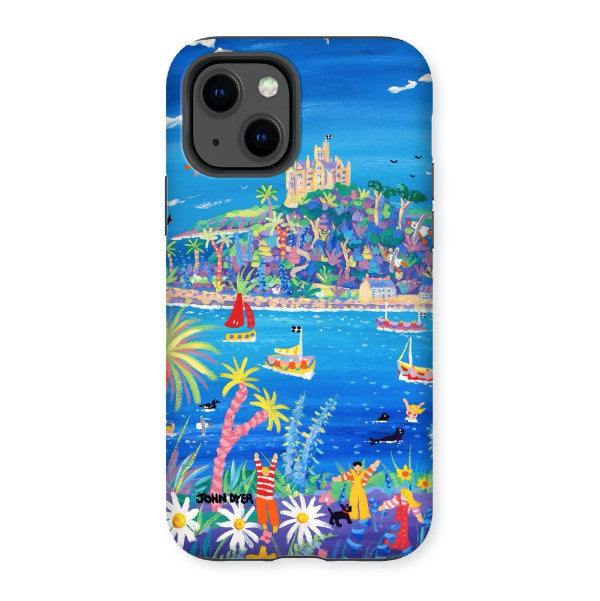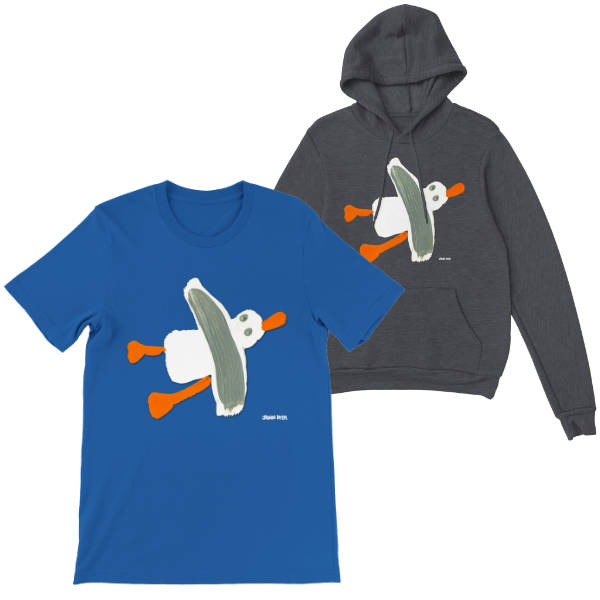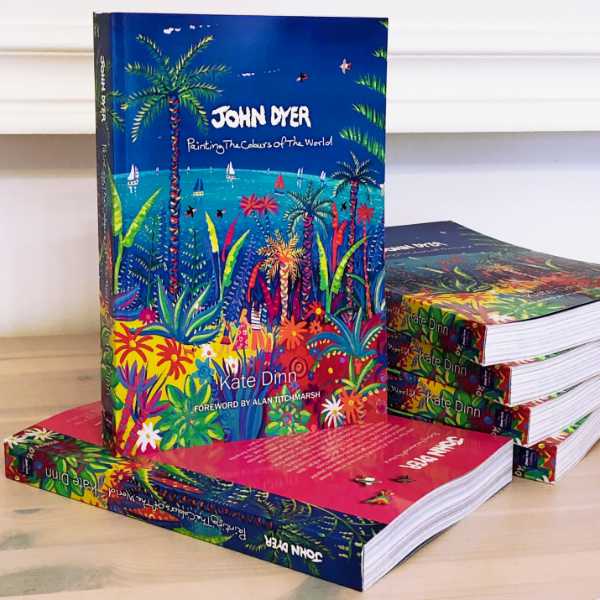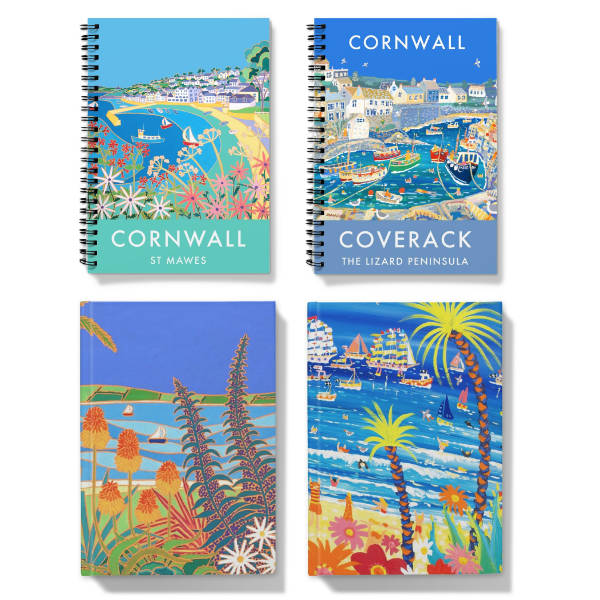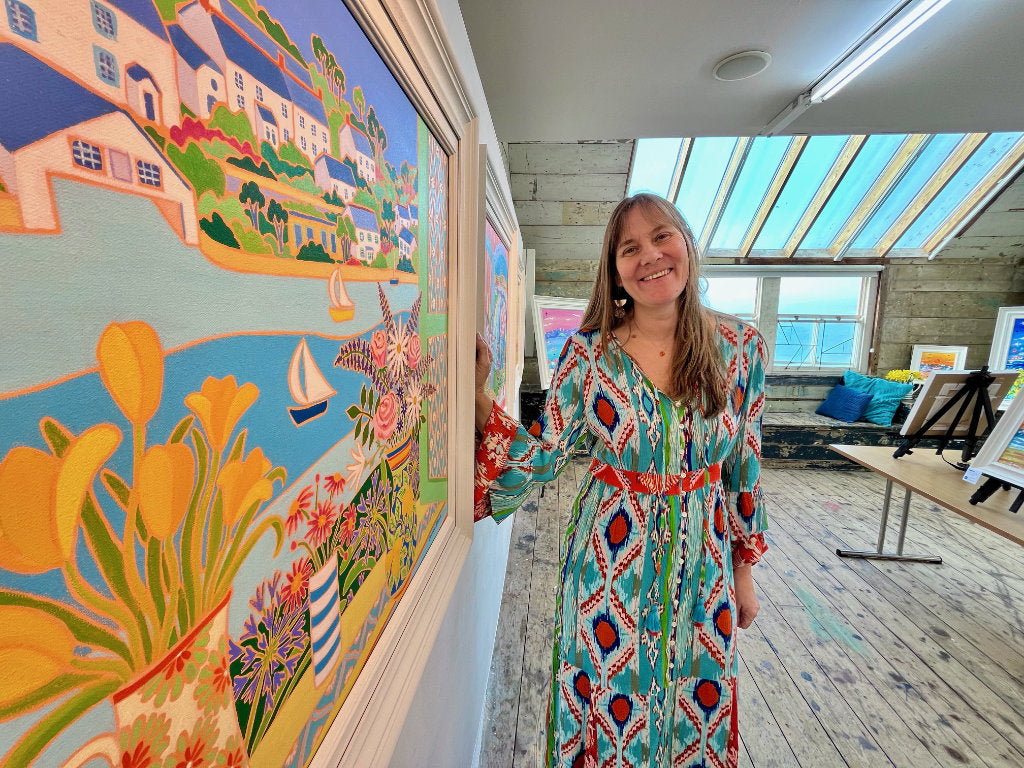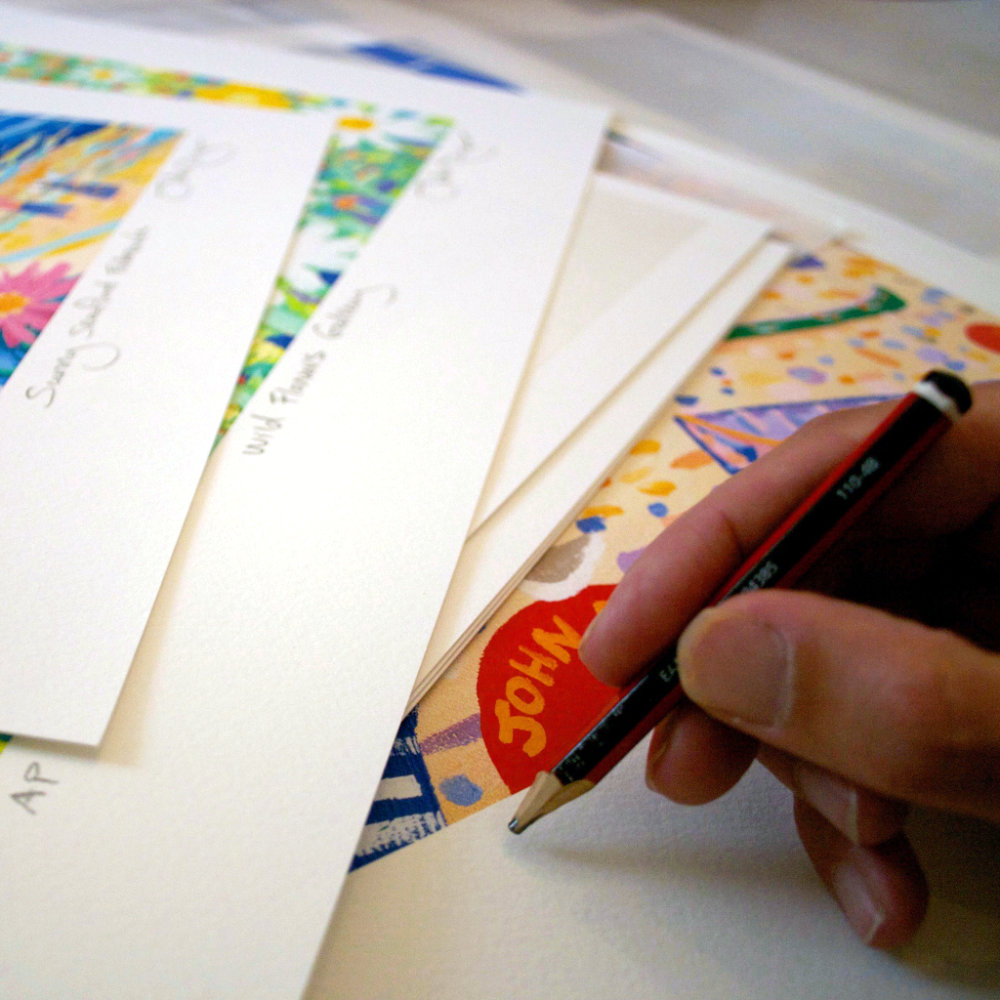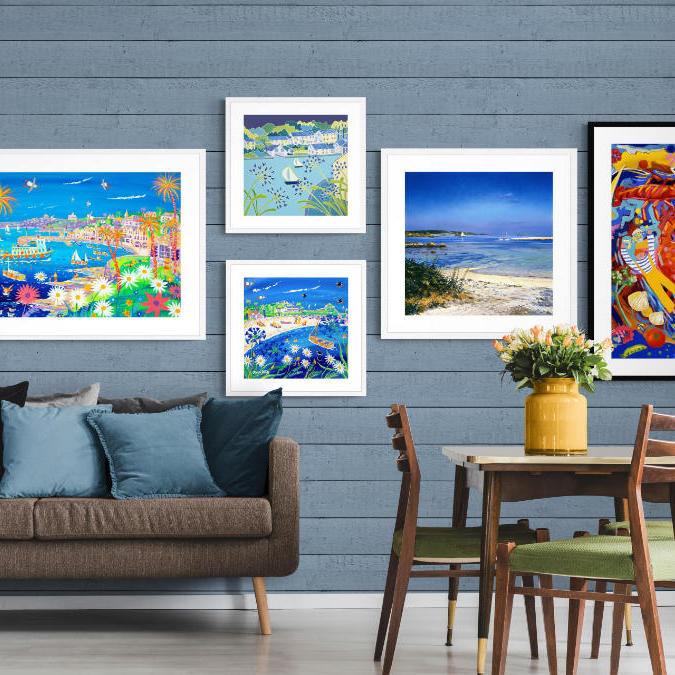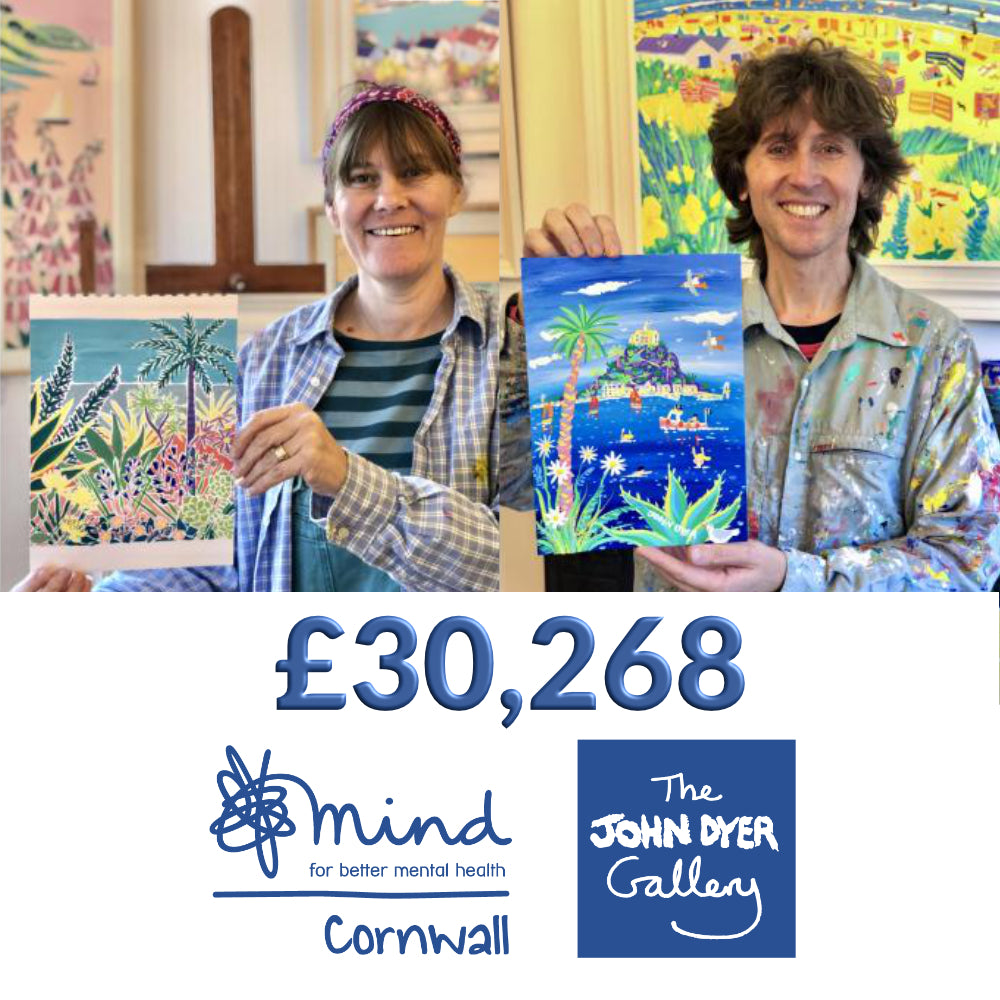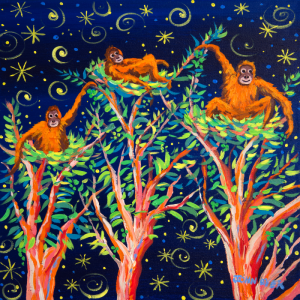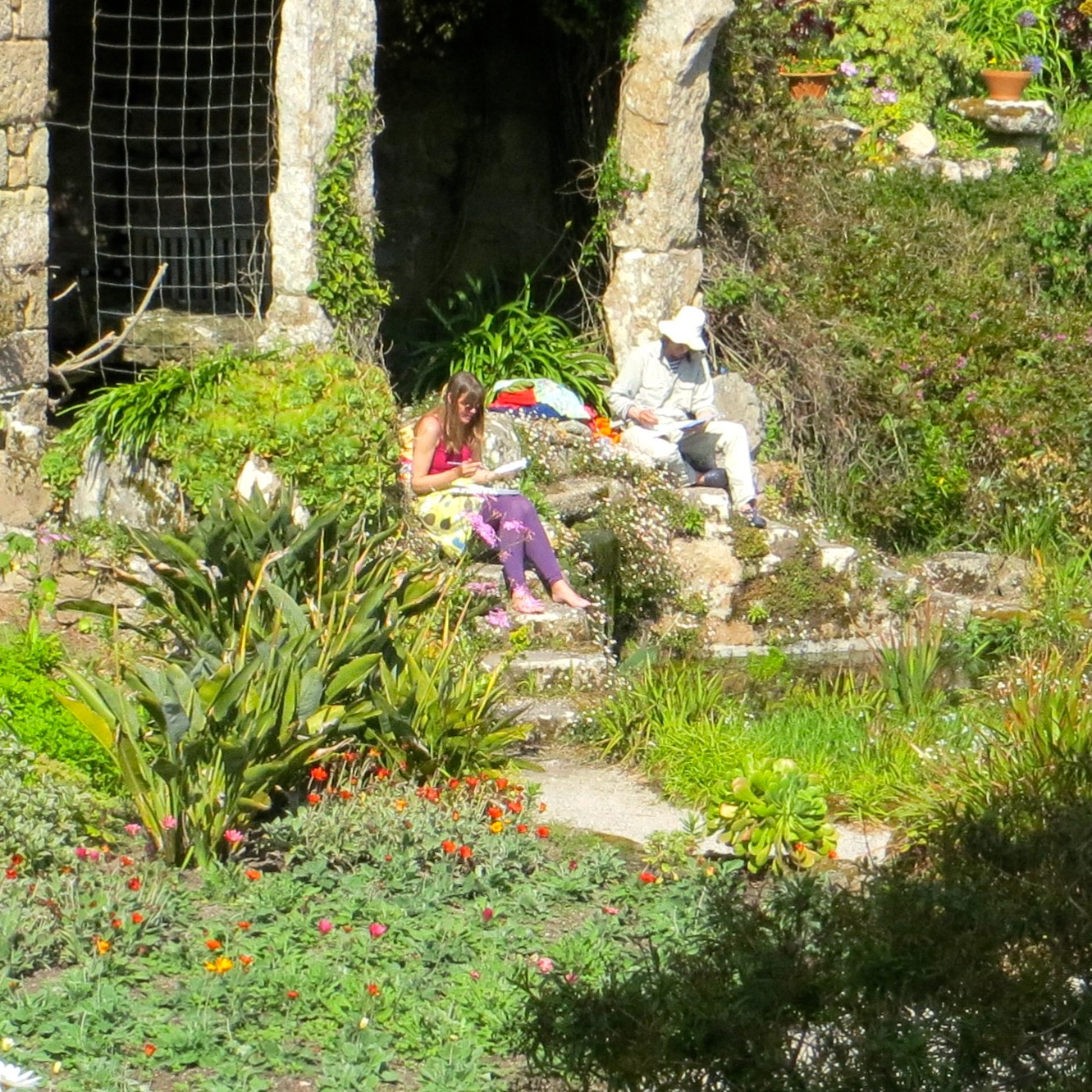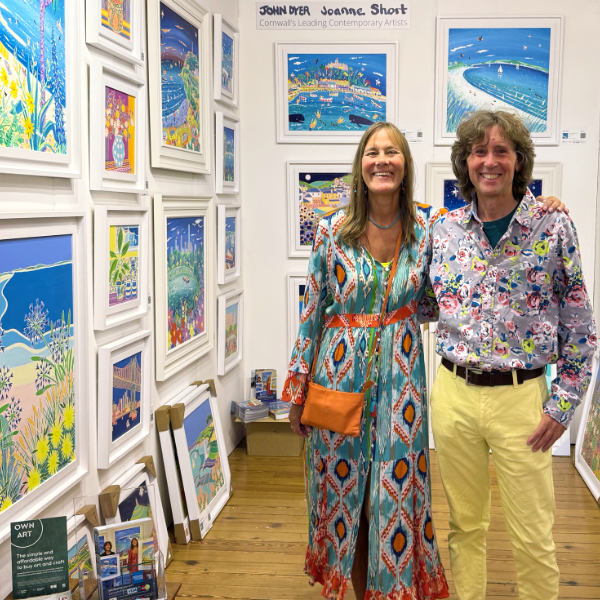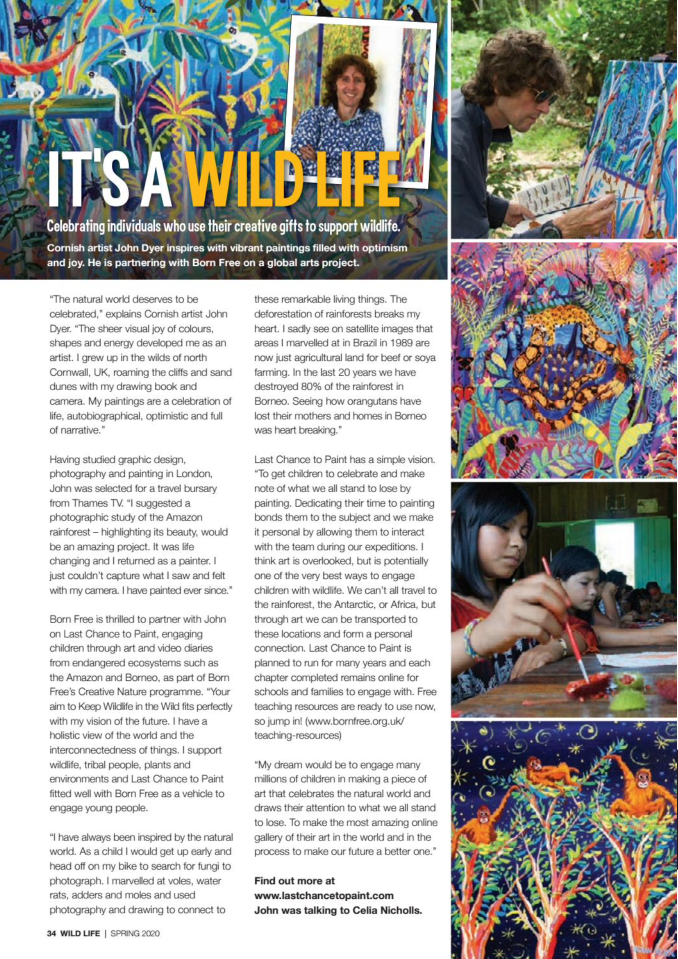
Celia Nicholls, the publications manager at the Born Free Foundation, interviews artist John Dyerfor the spring 2020 issue of 'Wildlife Times' the magazine for people who care about wild animals published by Born Free.
You obviously have a passion for your subject… could you tell us a little about your work?
The natural world deserves to be celebrated, noticed, valued and studied. The shear visual joy of the colours, forms, shapes and energy in the natural world developed me as an artist and painter. I grew up in the wilds of North Cornwall, roaming the cliffs and sand dunes with my drawing book and camera. It formed me as a person and I have always sought out wild places and amazing subjects to react to through art. My paintings are a celebration of life, autobiographical, optimistic and full of narrative. I hope they are life enhancing and full of joy that connects the viewer personally to the subject that the painting explores. I rejoice in fun and simplicity. A dog with a damp nose or a cheeky orangutan are wonderful subjects to explore in paint. They become the subject and narrative in the story the painting tells and each brush stroke loaded with wonderful colour can be a leaf form, palm, plant, cloud, bird or water surrounding them. When I am painting I am immersed and fully connected to my subject; as if one with it. I become part of the landscape, part of the subject, part of nature and absorbed and transported by the experience.
I believe your career started in the Amazon rainforest, what led you there?
I studied as a graphic designer, photographer and painter in London for my degree. My college, Middlesex University, selected me as one of their strongest young artists to be put forward for a travelling bursary award from Thames TV. I was focusing on photography at the time and was very interested in light and how infrared black and white film reacted to plant forms. I suggested to Thames TV that a fine art photographic study of the Amazon rainforest, highlighting its remaining beauty rather than its destruction, would be an amazing project and they agreed! Shortly after being awarded the travelling bursary and after much more fund raising and forming a friendship with Robin Hanbury-Tenison OBE (the vice president of the Royal Geographic Society at the time and president of Survival International) I found myself in the Amazon. It was a life changing experience and I spent three weeks exploring vast areas of the Amazon by river taking many photographs for an exhibition in London. Many of the areas are now gone - reduced to cattle farm land and I knew this would be the case when I was there. I returned from Brazil not as a photographer but as a painter as I just couldn’t capture what I saw and what I felt with my camera - paint was the only way to do this and I have painted ever since.
Thanks for all you do with Born Free. Why did you want to become involved with our charity?
Born Free’s aim to keep wildlife in the wild fits perfectly with my vision of the future. I have an holistic view of the world and the interconnectedness of things can’t be overlooked. Every action we take impacts us and the wider world. I support wildlife, tribal people, plants and environments and having met with the Born Free team it became clear we all held the same strong and positive views of the world and that my Last Chance to Paint global arts project fitted well with Born Free as a vehicle to engage young people about all aspects of the natural world. I have been very impressed by Born Free’s willingness to deliver not only animal based information through the project but to also deliver and engage with plant and tribal subjects as it is all reliant on each other and part of the great tapestry of life that supports all of us. Born Free have been amazing in their support and delivery of ‘Last Chance to Paint’ and together we have built a solid platform to deliver more inspiring chapters of the project over the next ten years.
Have you always been interested in the natural world?
I can’t imagine not being interested in the natural world as I have always studied it and been inspired by it. As a child I would get up early and head off on my bike in the Cornish coastal countryside to search for fungi to identify and photograph. I would make studies of local ponds, draw the tadpoles as they grew into frogs, photograph newts and birds, collected and pressed leaves and flowers and even brought home an adult seagull once who had an injured wing. I marvelled at vowels, water rats, adders and moles and all the time used photography and drawing as a way of connecting to these remarkable living things. I was an avid reader of BBC Wildlife Magazine and the National Geographic, but the pull for me was always the visual not the scientific which is why I eventually became an artist not a scientist.
Is there one animal species or issue especially close to your heart?
The deforestation of the rainforests around the world breaks my heart. I am now old enough to sadly see on satellites that areas I explored and marvelled at in 1989 are now just agricultural land for beef farming in Brazil. Flying across Brazil and Borneo with Robin Hanbury-Tenison was emotional as he is in his eighties and so much of the land we flew across used to be virgin rainforest and is now farmland, cities, roads and industry. In the last 20 years alone (my eldest daughter is 20) we have collectively destroyed 80% of the rainforest in Borneo. The second chapter of ‘Last Chance to Paint’ was in Borneo and working with the orangutans and seeing how they have lost their mothers, their homes, their futures and watching burning clumps of burning rainforest fall from the sky day after day was heart breaking.
A few days after I left the Yawanawá tribe deep in the Amazon during chapter 1 of ‘Last Chance to Paint’ another tribe just down river were destroyed by loggers and miners who invaded their land. Only two member of that tribe survived. The destruction and suffering I have personally witnessed in the rainforest makes this an issue close to my heart as I have friends in tribes who live and depend on the rainforest and my good friend Nixiwaka Yawanawá and his wife Matsa Yawanawá have just had a little baby boy, Sol Yahu Nixiwaka Yawanawá, and if he is to have a future the destruction must stop for his and all our futures.
What was your vision for Last Chance to Paint?
The vision is simple. To get children to celebrate and take note of what we all stand to lose in the natural word by painting and drawing it for the World Gallery. The process of dedicating their time to the painting bonds them to the subject and we make it personal by allowing them to interact with the team during and after our expeditions. I paint, they paint and we all add our work to the gallery to remind us all, and the wider world of what we are doing and what is at risk. We must personalise the climate crisis and mass extinction, give it a name, meet real people who are loosing their homes, forests and meet the animals that have lost their homes too. It’s only by building personal bonds and connections that children will be able to understand the consequences of their actions as they grow. If they know that by buying palm oil in products that Mona, the baby orangutang they painted, will potentially have no future, they might think a little harder. By knowing that Sol Yawanawá has just been born in the Amazon rainforest they will think carefully before eating more beef potentially imported from Brazil as that is where Sol lives and his future depends on his rainforest being left intact. Children have a lot to deal with, but the aim of the project is to aways be optimistic, colourful, fun and personal and to celebrate what we still have before it is too late.
Is art a good way to engage children with wildlife?
I think that art and creativity is an overlooked way but potentially one of the very best ways to engage children with wildlife and environments It certainly engaged me as a child and it has engaged my children too. We can’t all travel with a camera or scientific equipment to study the rainforest, the Antarctic, wildlife in Africa or sea turtles, but through art we can all be transported to these locations and with knowledge, images, personal interactions, imagination and art materials we can form a personal connection. We have interviewed several children this year about their experience with ‘Last Chance to Paint’ and their reactions have been astonishing, it really does work and we are making a difference.
Last Chance to Paint seems to be a real team effort?
As an artist I have built up a large following for my paintings and also a following from schools around the world who take great delight in using me as a subject and my colourful paintings of Cornwall. It is this launch pad we are trying to use to deliver Last Chance to Paint and to move the focus away from harbours and Cornish beaches to larger environmental subjects and I have had to build a team to do this as it is stronger, better and only deliverable as a team.
Born Free and the education team of Laura and David are a key part of the team as their knowledge of schools and how to write and deliver teaching resources makes delivering the project to schools possible. The Eden Project’s knowledge of plants and environments has been important for the teaching resources and I am grateful to all my contacts at Eden for their ongoing support. Eden have also hosted a big Last Chance to Paint arts weekend and exhibition of the paintings from the first two chapters.
Robin Hanbury-Tenison OBE has been an amazing travelling companion and his unrivalled knowledge of tribal people and his endless enthusiasm for the environment have been key to the project.
Art is not only visual but music is really important and I have seen whole schools transformed by music played by my daughter Martha-Lilly Dyer who heads up the musical aspect of Last Chance to Paint. Martha-Lilly is a natural environmentalist, artist, photographer, musician and supporter of my work and working process. She is a key part of the team and took all of the photos and videos during the first two expeditions and published the daily blog, liaised with schools and provided a young fresh and fun face for the children to relate to.
We commissioned two new pieces of flute music for the project this year and it literally brought tears to the team's eyes watching Martha-Lilly perform these to the Yawanawá tribe in the amazon and the Penan tribe in Borneo.
Behind the scenes we developed a formidable set of supporters who leverage sponsorship, technology, expertise and social media reach to help us deliver the project with huge support from Procreate who make the #1 best selling app for iPad, Innova Art the paper company, Samson Technologies who gifted us mics, Iridium who provided the equipment and sponsorship for satellite communications from around the world, Rohan for all the team’s clothing and Steppes Travel provided sponsorship and amazing advice and support or the travel.
On the ground we couldn’t have achieved anything without the Yawanawá tribe and Penan tribes and the the Orangutan Foundation’s huge support and for hosting us. Last Chance to Paint is a world class team of people and organisations.
Can readers get involved with the project?
Last Chance to Paint is planned to run for many years and each chapter of the project that is completed remains online for schools and families to use for inspiration. Schools and families can sign up today for free to pledge their support and keep in touch and we have 24 countries represented so far by schools. We have our first two chapters completed; ’Spirit of the Rainforest’ from the Amazon and ‘Person of the Forest’ from Borneo online and ready to use now. We are still ‘Live’ if schools want to ask us questions so the projects can be delivered to a class day by day with our daily videos and blogs to inspire the class. Any questions we receive will be answered by our team. The project will be open to receive art from children from around the word who have made a piece of art based on our projects on an ongoing basis and all of those pieces of art will be exhibited in our World gallery (t&c apply). Every year our awards panel, which consists of myself, Sir Tim Smit, Virginia McKenna and Kate Stephenson will be choosing a selection of that work for awards and we hope to build on this year by year.
What are your dreams for the future?
My dream is to engage many millions of children in the process of making a piece of art that celebrates the natural world. To literally draw their attention to what we all stand to lose so that they make careful choices as they grow and live their lives in a way that protects the natural world, pants, peoples, animals and environments. I am delighted to have been appointed an 'Artist for the Earth' for the 50th anniversary of EarthDay.org and hope that many families around the world will take the opportunity to connect their children to the issues we all face.


